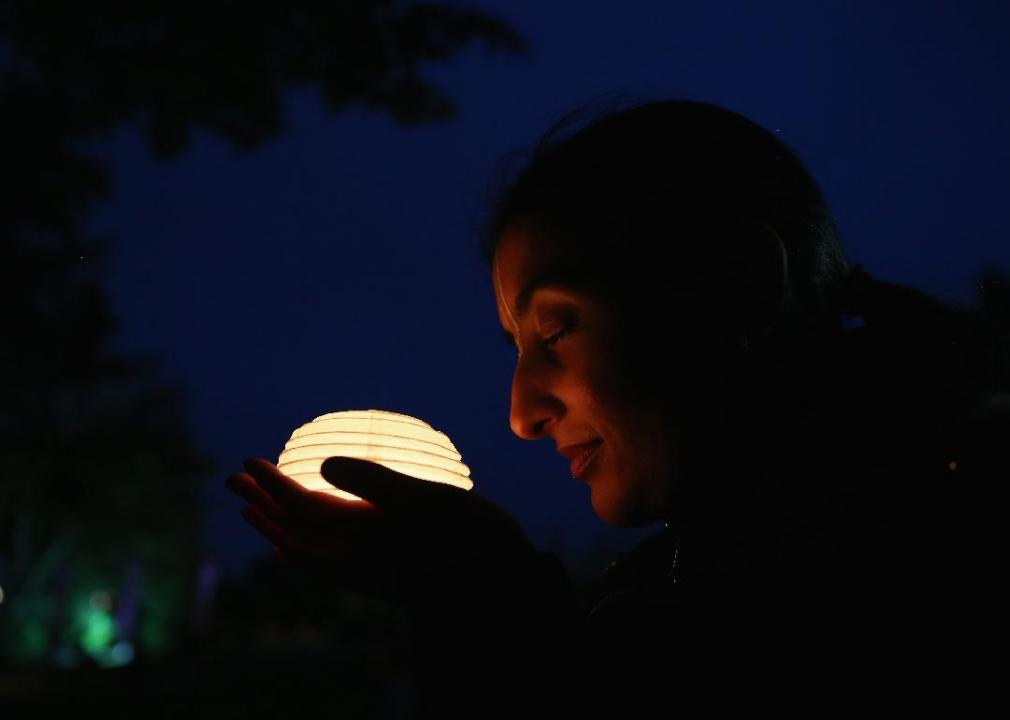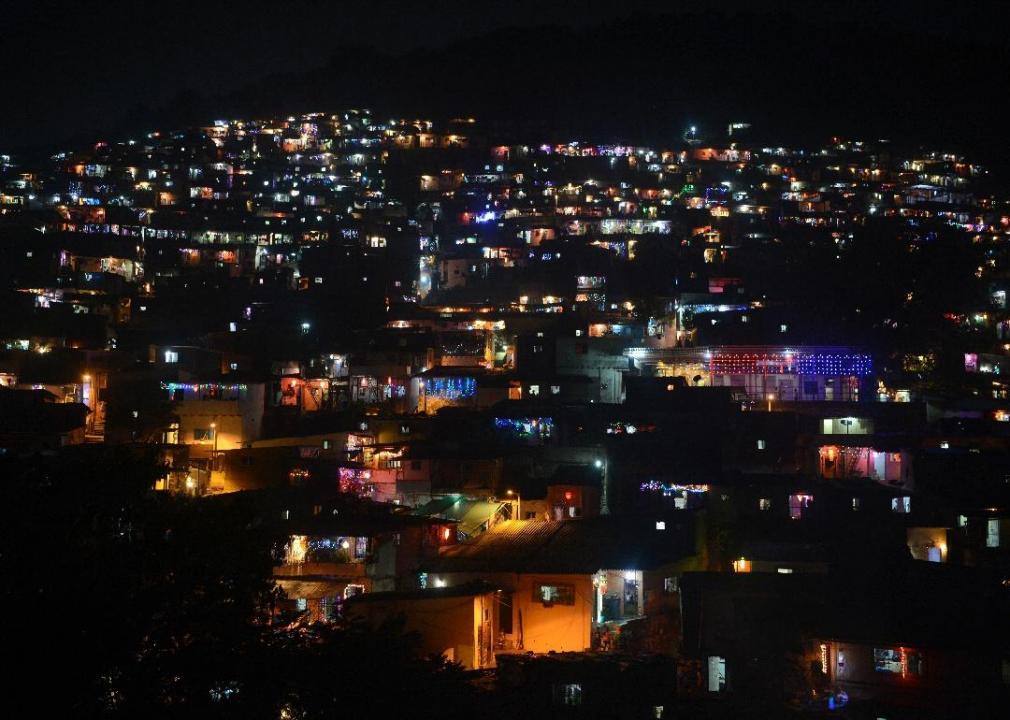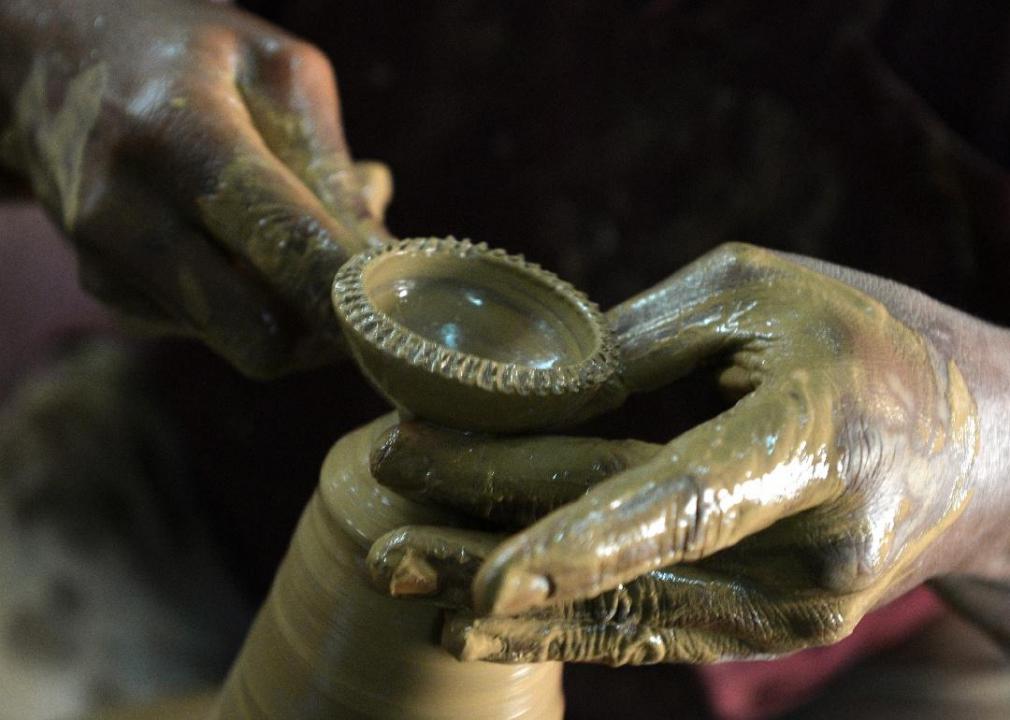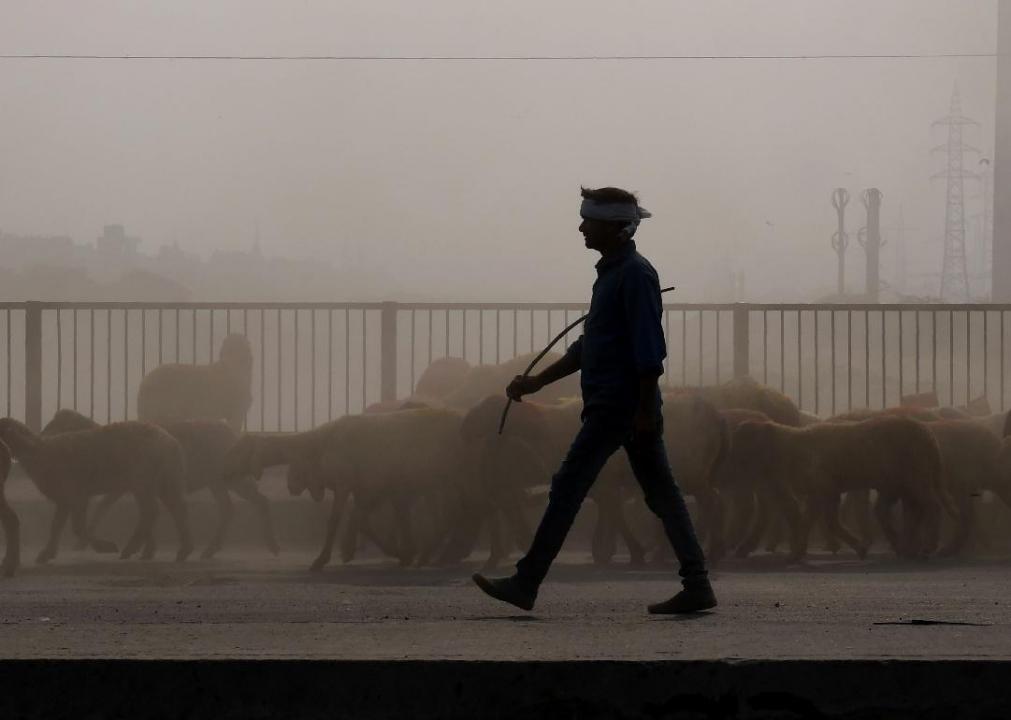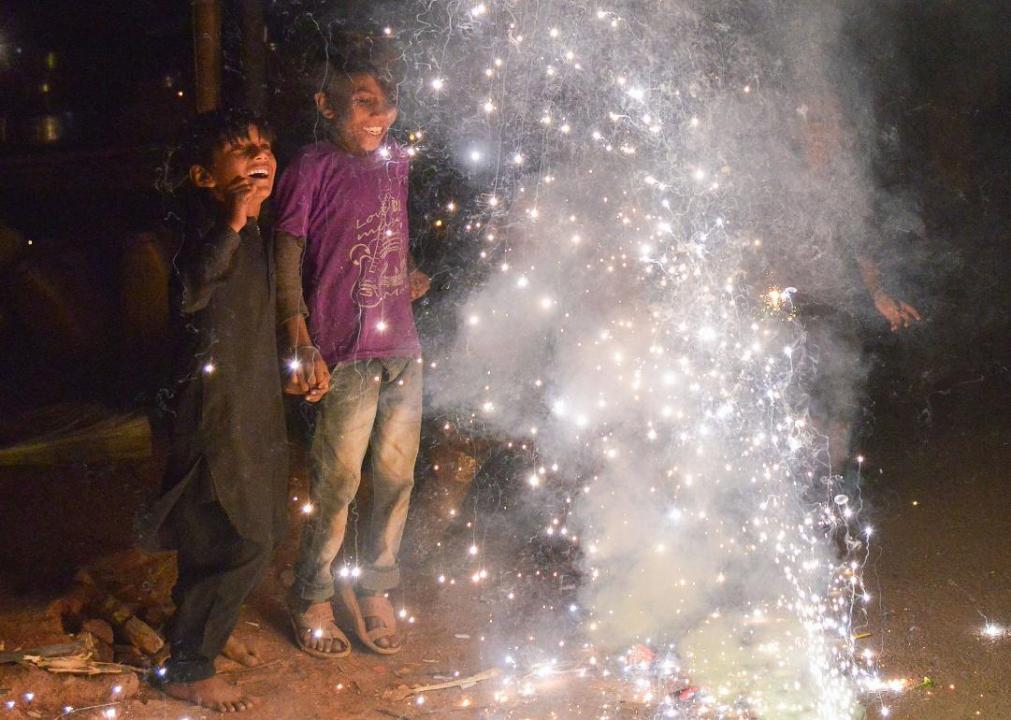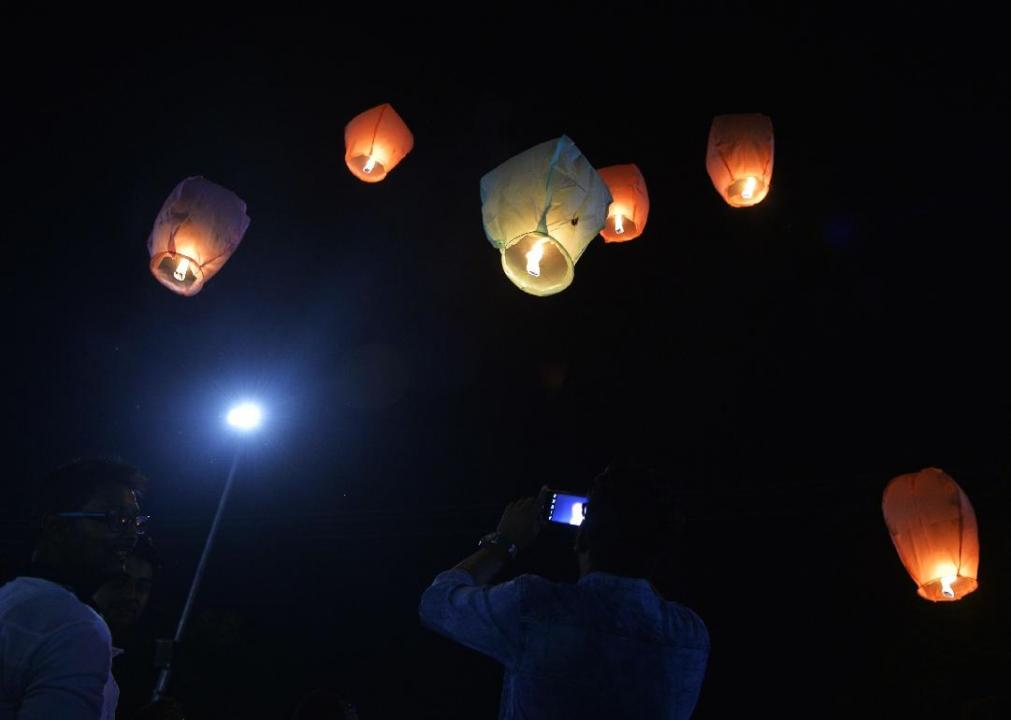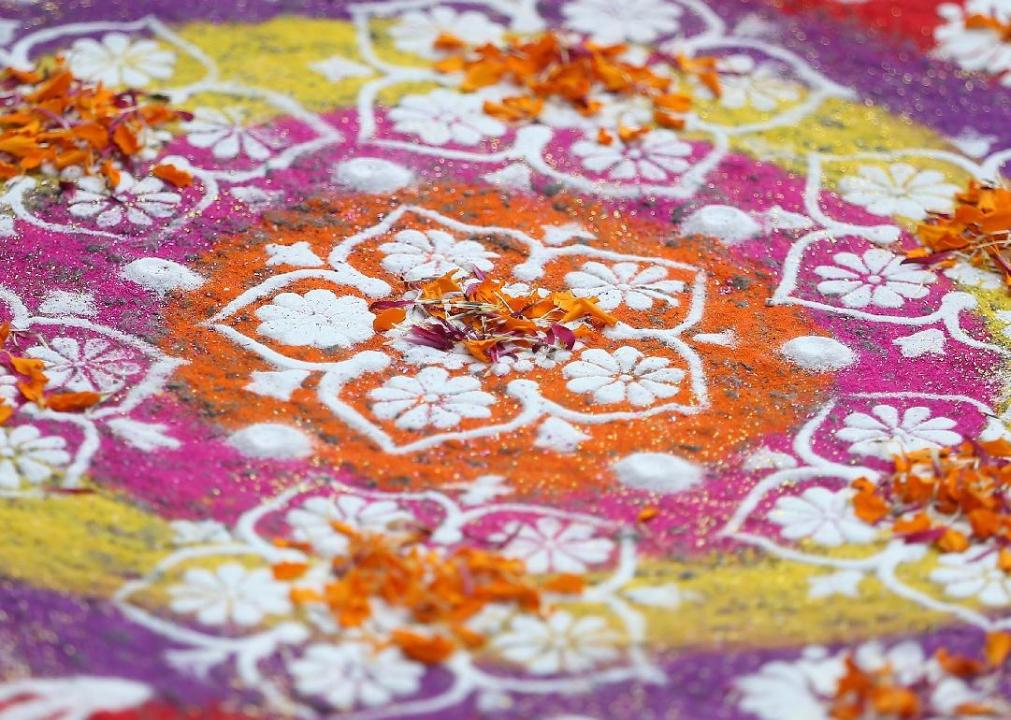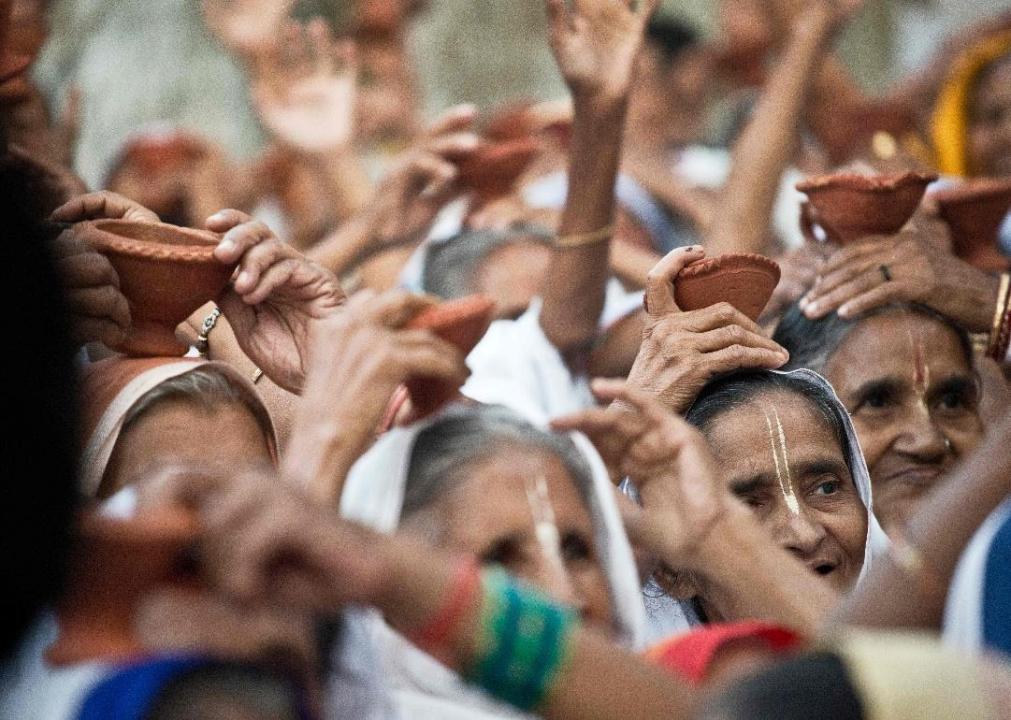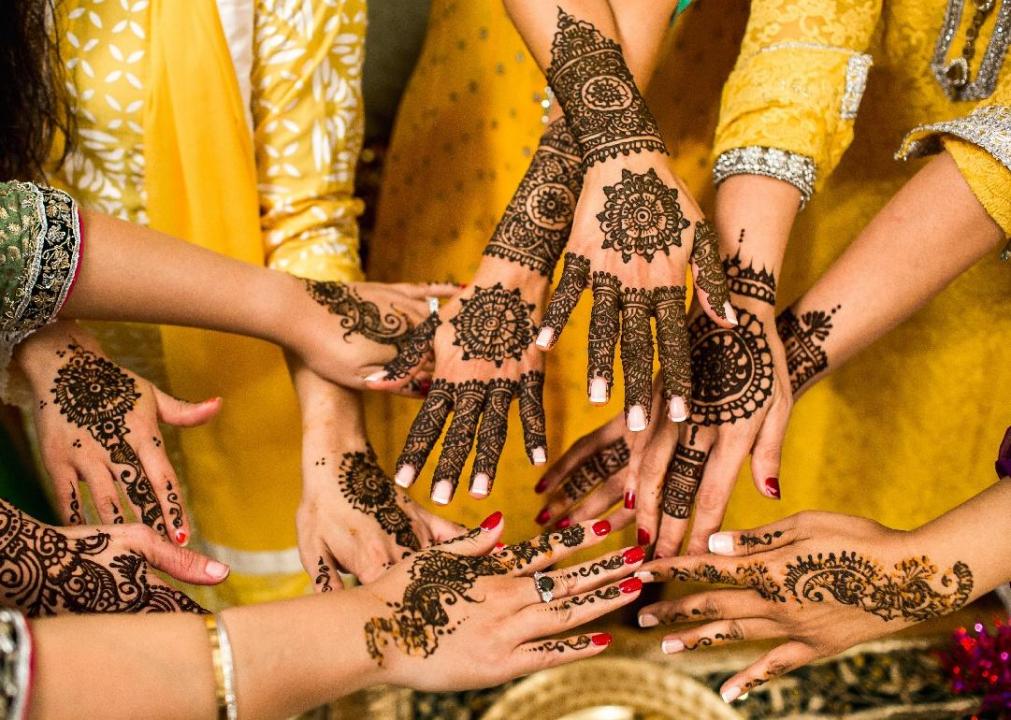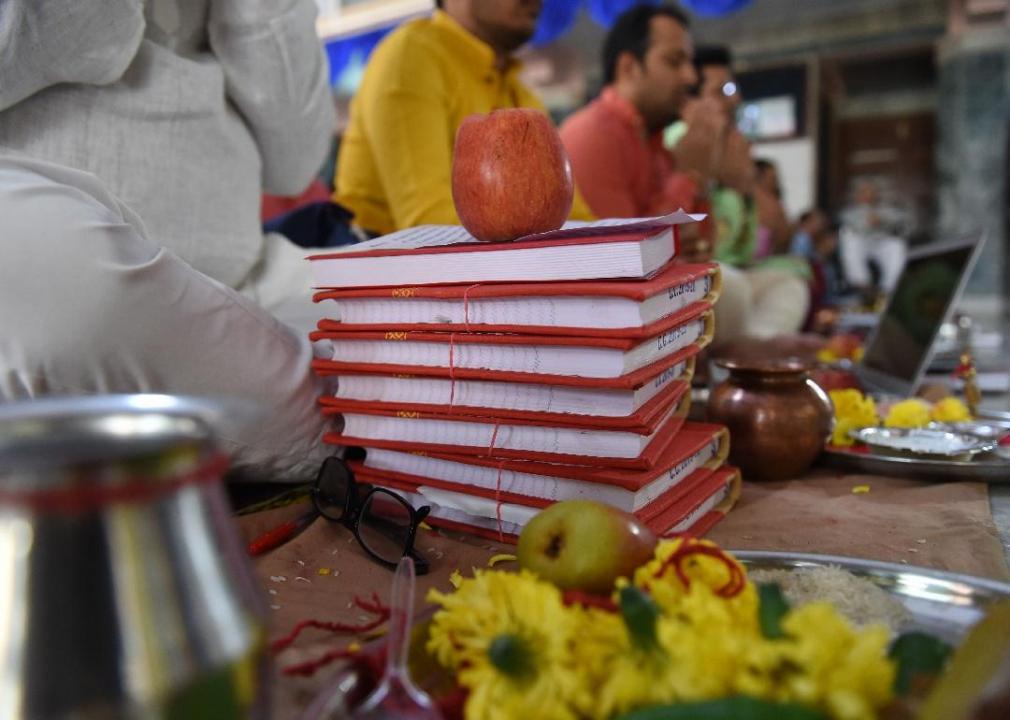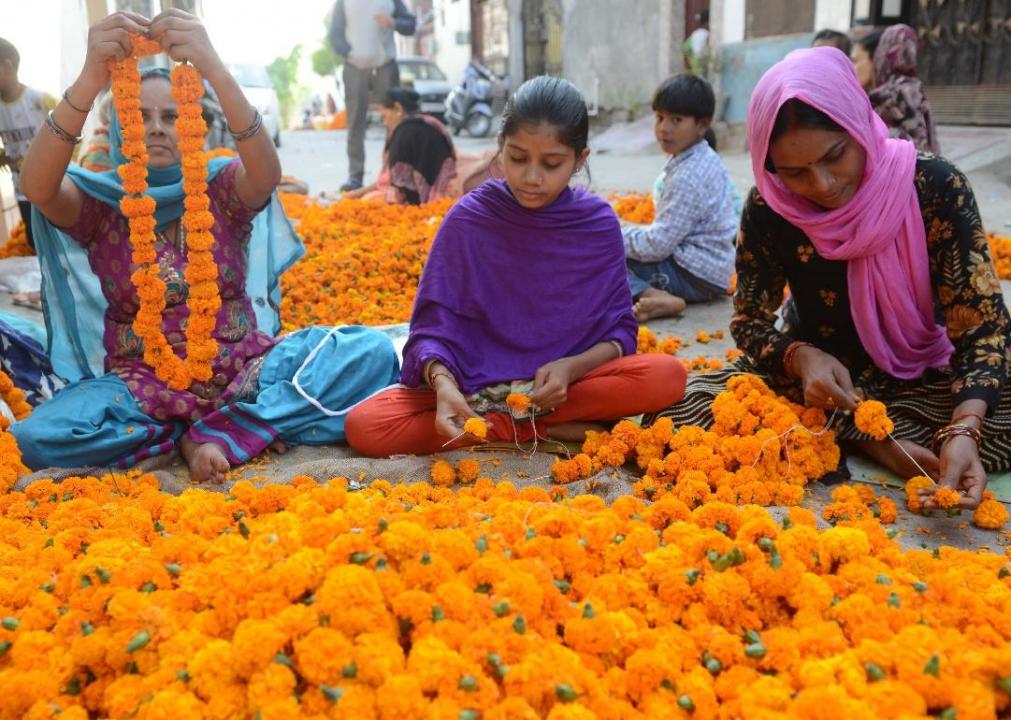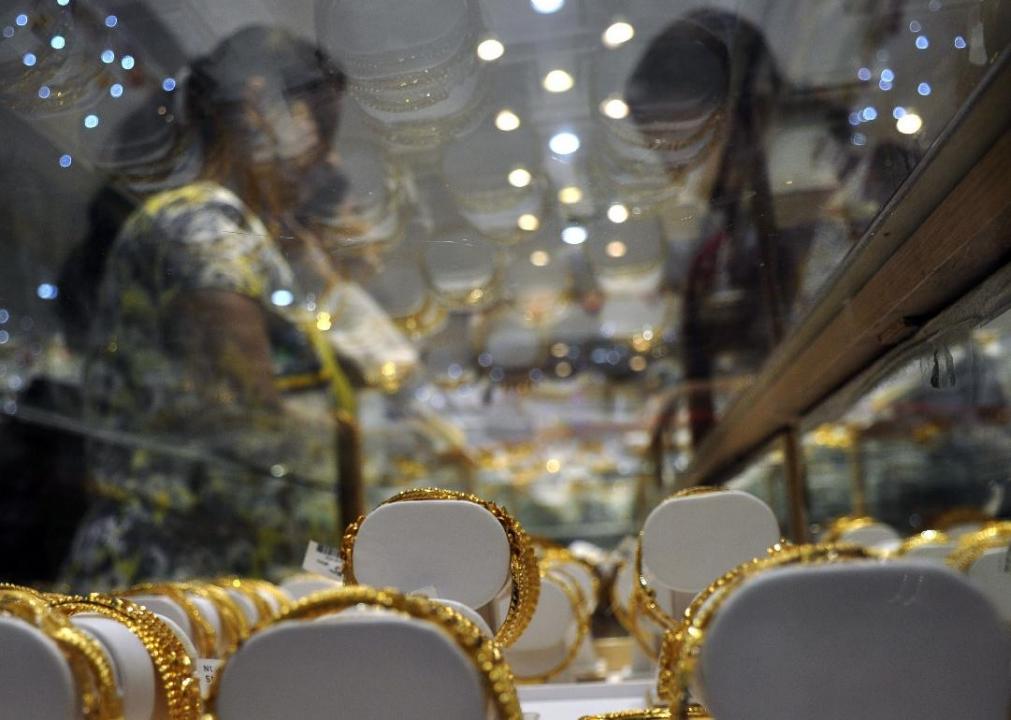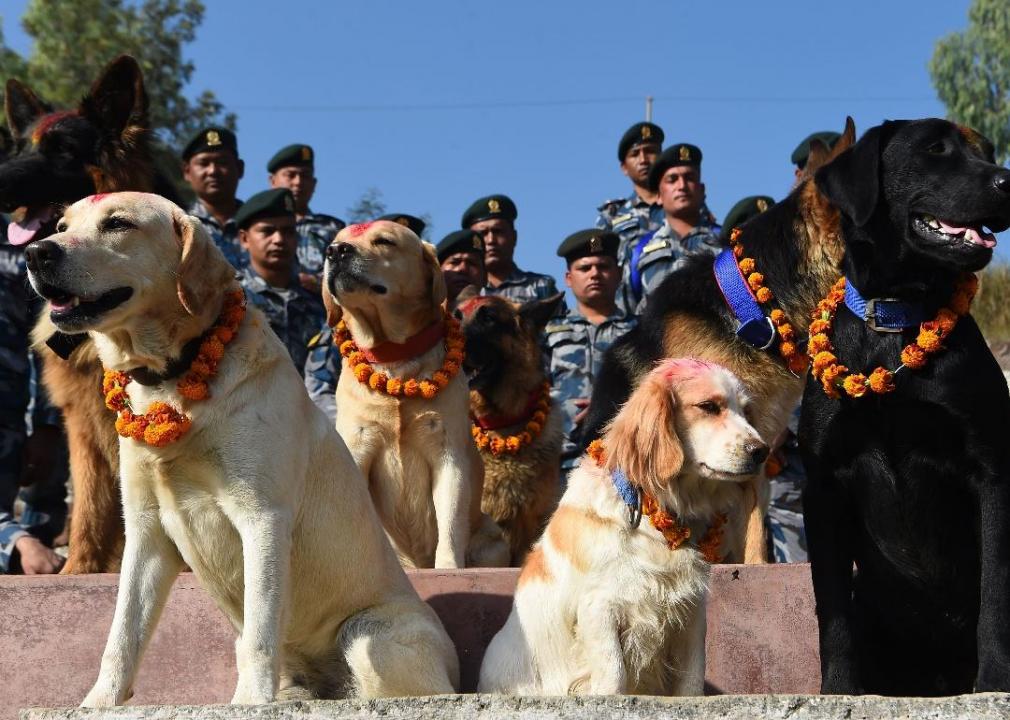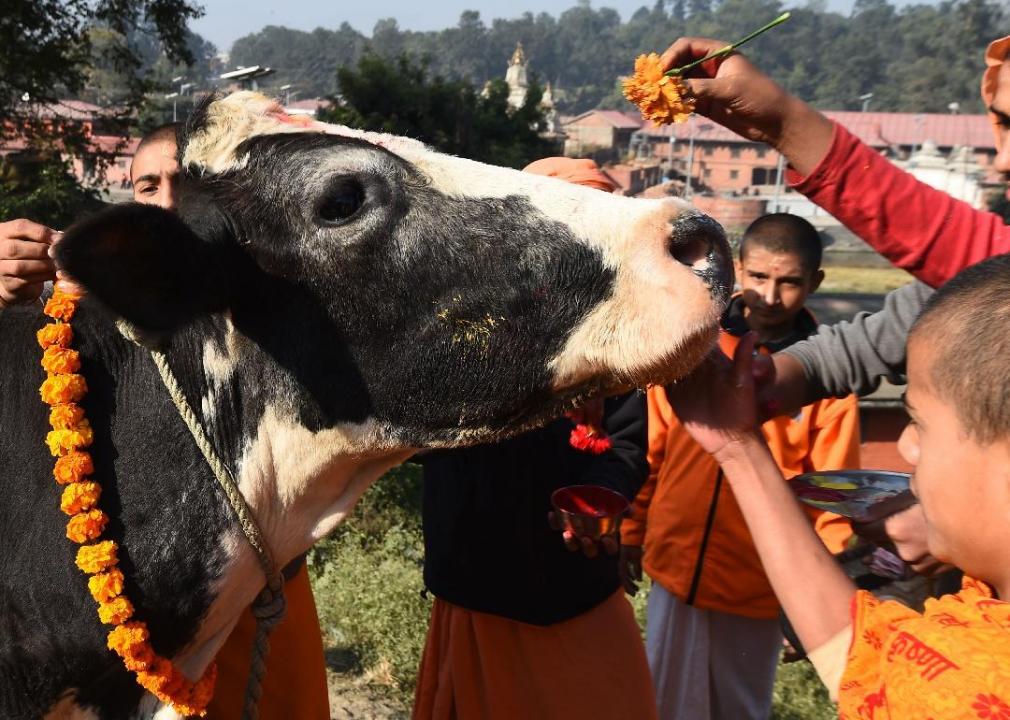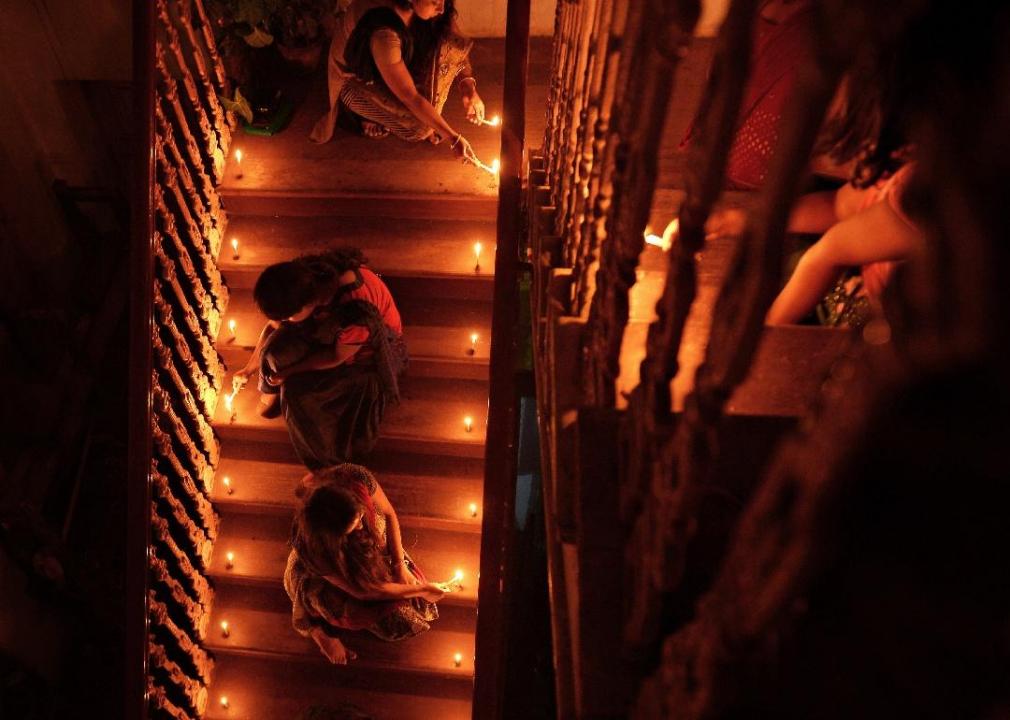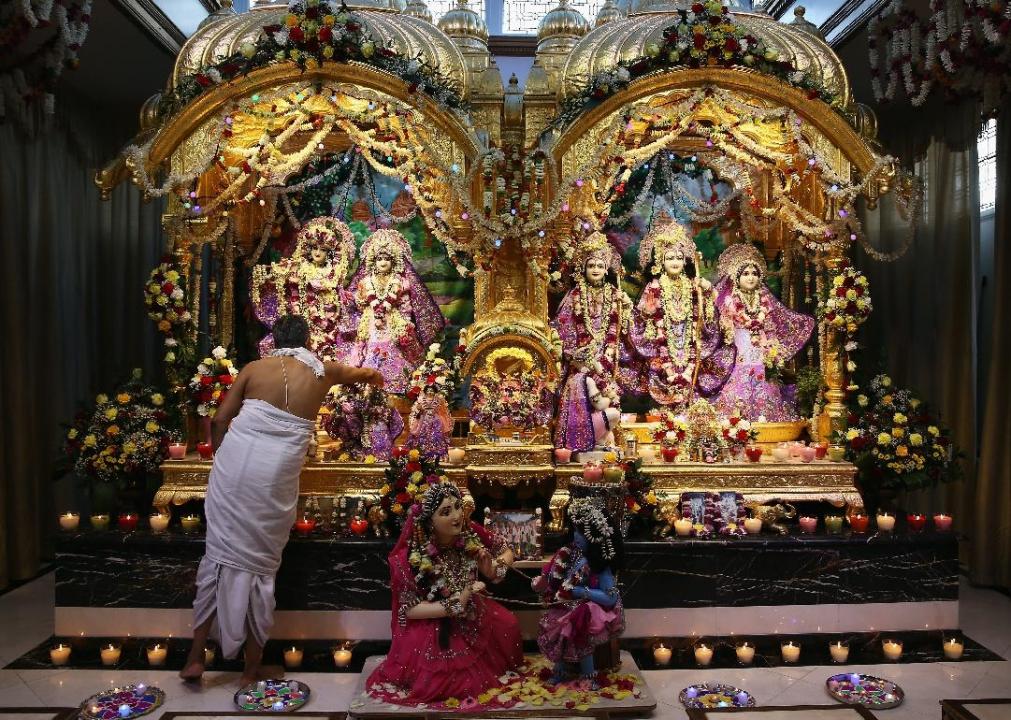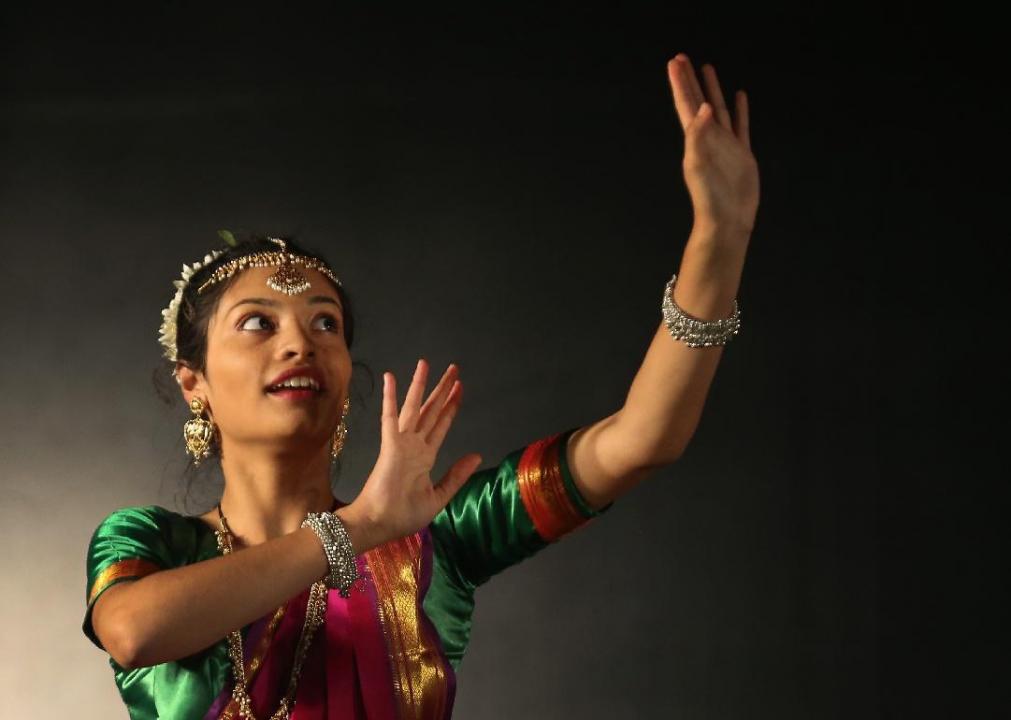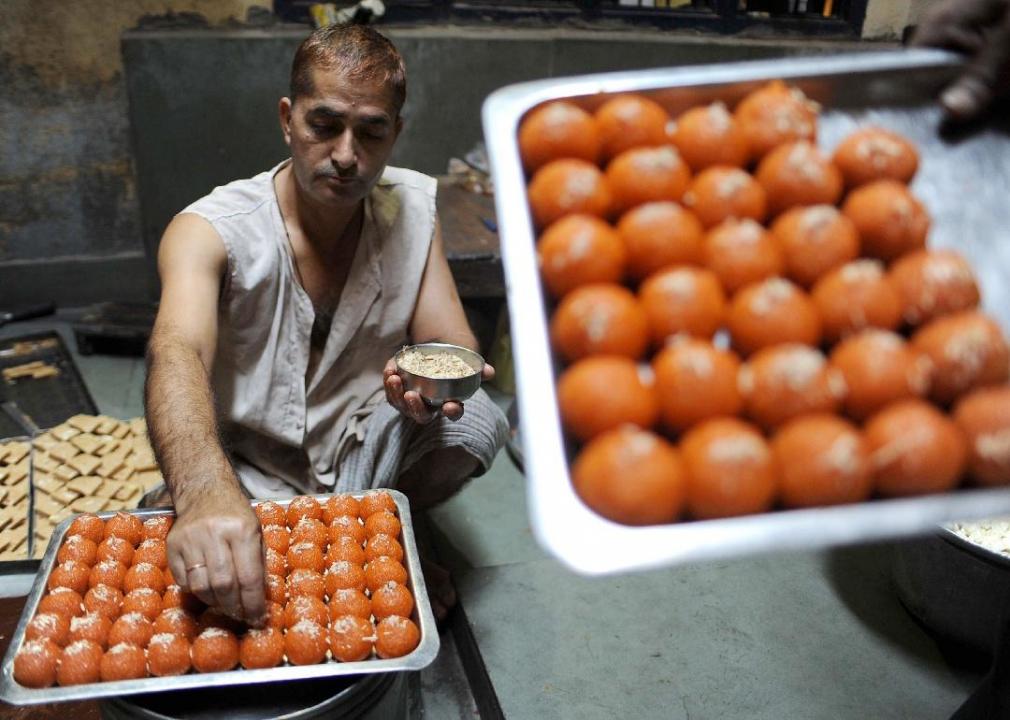Diwali explored in 20 stunning images
Dan Kitwood // Getty Images
Diwali explored in 20 stunning images
Whether it’s in ancient civilizations or modern religions, light has been used as a ceremonial and religious symbol for centuries. In Hinduism, Diwali or Deepawali festival underscores just that. Known to the Western world as the Festival of Lights, this five-day holiday is one of the biggest of the year in India as it celebrates the triumph of good over evil.
Stacker used various sources to compile 20 images showcasing the history and traditions of Diwali. Common practices include lighting lamps, exchanging gifts, and eating sweets. For some, it’s a religious experience, but for others, it’s more spiritual and cultural. But more important, it’s a moment to celebrate. There is no specific date tied to the festival because the five days are centered around a new moon, but they always fall in October and November, with the third day (Lakshmi Pujan) representing the height of the Diwali festival.
The relationships between people, animals, environment, and religion are exemplified during the time of year. Different rites and traditions center around giving thanks and acknowledging the relationships people have in life. But the festival also has far-reaching economic implications. Ahead of celebrations, people rush to buy gold and other goods, which in turn fuel many industries tied to the holiday.
Diwali also has environmental effects, and the continued use of fireworks and sparklers during the holiday have polluted India’s skies. Regardless, nothing curbs the celebration of such an auspicious time, and the holiday is not regionally bound. People all over the world celebrate in different ways, be it lighting a single candle or going to a temple.
While the end of Diwali marks the start of a new year, the exact cause for celebration slightly varies depending on the region in question. In North India, for example, the festival commemorates the return of Lord Rama to the kingdom of Ayodhya after he defeated the evil Ravana. In the Hindu epic “Ramayana,” Ravana kidnaps Lord Rama’s wife, Sita, but with the help of an army of monkeys, he rescues her and returns to his kingdom. And in Bengal, the goddess Kali is worshipped, while in Nepal, people celebrate Lord Krishna. And for others, the holiday is spent celebrating the goddess of wealth, Lakshmi.
Read on to learn more about the differences in traditions and histories of the ancient festival Diwali.
You may also like: 100 iconic photos that capture 100 years of world history
![]()
PUNIT PARANJPE // Getty Images for AFP
Path for light
For five days each year, cityscapes are illuminated with lights in India and many other countries and communities celebrating Diwali. Millions of lights are intended to welcome the good into people’s homes.
MANJUNATH KIRAN // Gety Images for AFP
Diyas
“Diya” translates to the word “lamp” in English and is used for many ceremonial occasions throughout the year. The simplest way to celebrate Diwali is to light a diya in your home. Potters handmake millions of clay lamps and see a spike in demand right before the annual festival.
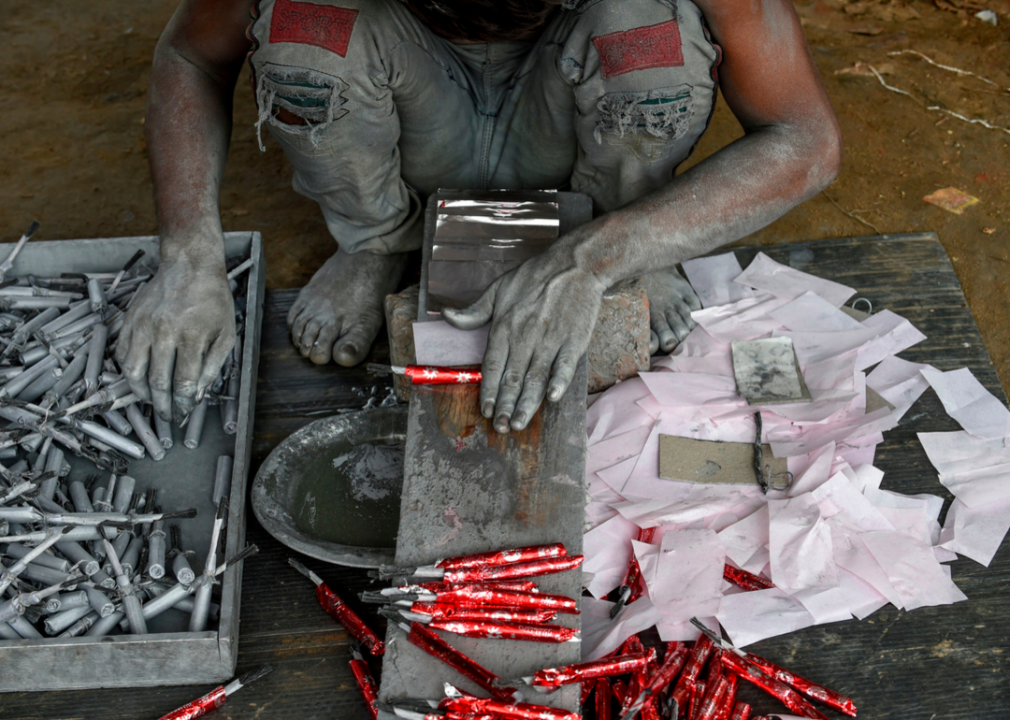
SAM PANTHAKY // AFP via Getty Images
Firecrackers
China and India are the two leading producers of firecrackers in the world. In 2016, India had the second-largest country market in the world, followed by Europe and Japan. Making the popular consumer item involves dealing with chemicals like phosphorus, sulfur, and potassium. The factories and local shops produce tons of hazardous waste, and the people who work there are at risk for pulmonary diseases. But the tradition of lighting firecrackers to further commemorate the triumph of good over evil during Diwali is longstanding. As a result, the holiday continues to fuel the firecracker industry.
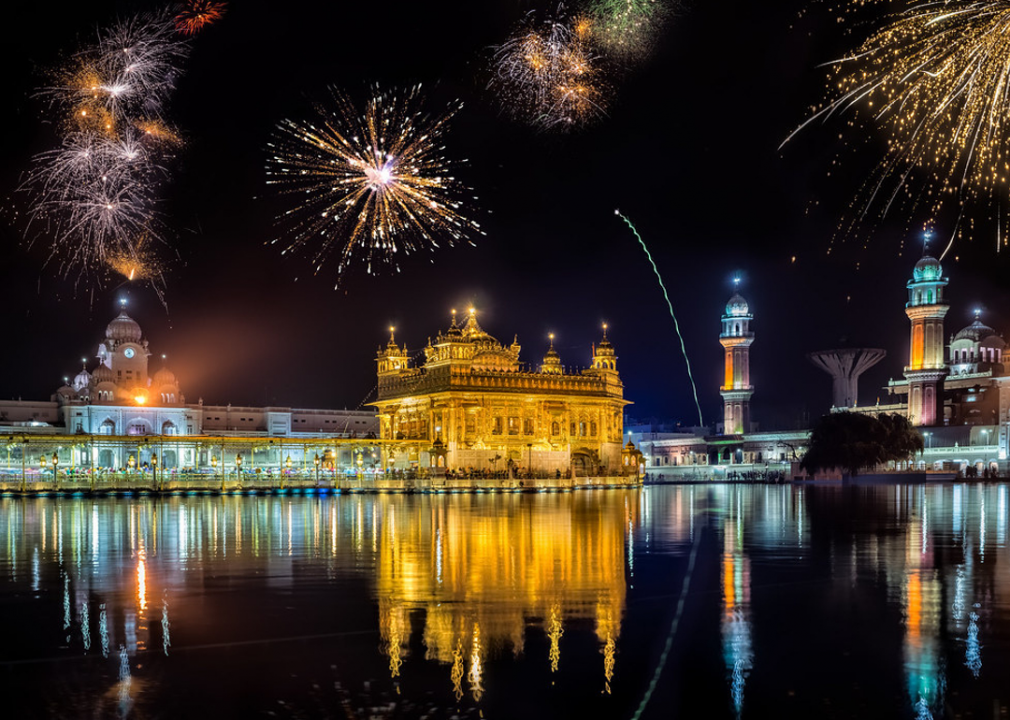
gags9999 // Flickr
Fireworks
Similar to the use of handheld firecrackers, fireworks represent the same sentiment of welcoming the good. Firework displays dot the South East Asian skies this time of year, and one common location is to set them off at temples and places of worship, such as the Golden Temple Amritsar (pictured above).
MONEY SHARMA/AFP // Getty Images for AFP
Polluted skies
Excessive use of fireworks and firecrackers during the holiday exacerbates India’s worsening toxic smog problem. Pictured above is New Delhi a few days after Diwali celebrations in 2018. In 2019, Environment Minister Prakash Javadekar urged people not to use firecrackers at all. The Central Pollution Control Board tracks air quality and brings awareness to the benefits of newly emerging alternatives such as green firecrackers. Green firecrackers differ in that they don’t use barium nitrate with potassium nitrate and include dust suppressants.
You may also like: Can you answer these real ‘Jeopardy!’ clues about your state?
SHAUKAT AHMED // Getty Images for AFP
Prevalence of polluters
India’s Supreme Court banned regular firecrackers in 2018 and instituted a two-hour window for the use of eco-friendly firecrackers, but people snubbed rules and used regularly firecrackers across the country anyway. Even kids take part in the festivities, often lighting firecrackers in backyards and alleyways.
AFP Contributor // Getty Images
Lanterns
Another hazard of using fireworks is the effect they have on animals. There are an estimated 30 million stray dogs in India. The loud and frequent bursting sounds can cause fear and anxiety in animals—particularly ones that don’t have a home to retreat to. As an alternative to the air and sound pollution, volunteers propose the use of lanterns as safer and more peaceful alternatives.
Chris Jackson // Getty Images for Chris Jackson Collection
Rangoli
Another notable tradition accompanying Diwali is the creation of rangolis. Rangoli is used for many other celebrations as well; it is a decorative and auspicious practice for which people make decorative designs with colored sand, flower petals, and grains like rice. Rangolis can often be seen in temples and at the foot of entryways and doors to bring good luck into a household.
ROBERTO SCHMIDT // Getty Images for AFP
Women who celebrate
Many communities in India still shun widowed women and forbid them to celebrate holidays, including Diwali. These women, who in many cases were married off young and never received an education, are forced to wear white and cast away. But that’s beginning to change. Seen here are groups of widowed women carrying diyas on their heads as they parade through the streets to commemorate the festival and their participation.
Unsplash
Mehndi
Mehndi is the application of henna, a plant which, when dried and made into a paste, acts as a temporary dye. Mehndi decorates women’s hands and feet in times of celebration, including Diwali. Whether it was a replacement for jewelry, served as a symbol of beauty and luck, used for its medicinal value, or all of the above, the exact origins of Mehndi aren’t clear. But in India and other Southeast Asian countries, mehndi is historically tied to weddings, festivals, and other hopeful days.
You may also like: The 52 women who have won the Nobel Prize
SAM PANTHAKY Getty Images for AFP
Lakshmi Puja
Lakshmi Puja, known as Chopda Pujan in other regions such as Gujarat, is the third day of the Diwali’s five-day celebration that is all about the goddess Lakshmi. Lakshmi is known as the goddess of wealth and purity, and because of that, it is common to find people adorning books, computers, checkbooks with fruit, sweets, and flowers to offer Lakshmi in return for a blessing. For some, attending a temple or doing a simple prayer is all that signifies the day. Regardless, it is thought that a blessing from the goddess of wealth during this holy time will result in financial prosperity for the coming year.
NARINDER NANU // Getty Images for AFP
Marigold garlands
The vibrant color of the marigold flower are considered auspicious and are used to dress front doors and idols for worship. Days before the festival itself, people will spend hours creating garlands out of the flowers to share and even sell, which is seen here.
ARINDAM DEY // Getty Images for AFP
Dhanteras
In Sanskrit, “dhan” means wealth, and “tera” refers to the 13th day of the Hindu calendar. Dhanteras is the first day of Diwali, and on this day, people make purchases of precious metals to bring good luck to their endeavors. Whether it’s metal pots and pans, or fine jewelry, people typically use this day to make a significant and auspicious purchase.
PRAKASH MATHEMA // Getty Images for AFP
Kukur Tihar
Hindus in Nepal know Diwali as Tihar, and it involves many of the same elements—such as the celebration of Lakshmi—but there are some variations. For example, the second day of Tihar is marked by the worship of dogs. Dogs are thought to be the agents of Yama, the god of death, and are involved in guiding souls to a peaceful afterlife. Marigold garlands and Tika (vermilion powder) are placed on the dogs. But in addition to appeasing the god of death, the day also commemorates the loyal and compassionate relationship between humans and dogs. Police officers will celebrate their canine partners on this day as a sign of respect for their contribution to society.
PRAKASH MATHEMA // Getty Images for AFP
Gai Tihar
Another slight variation between Tihar and Diwali is on the day of Lakshmi Puja. In Nepal, before the celebration of Lakshmi in the evening, Hindus will take part in Gar Tihar—the worship of cows. Seen above, cows are given marigold garlands and blessed with Tika. Cows are considered sacred, which is why many Hindus don’t eat beef. However, cows are also celebrated for the food they give to society in forms of milk, butter, and cheese.
You may also like: Origins of the 50 most popular dog breeds
DIBYANGSHU SARKAR // Getty Images for AFP
Celebrating family
In addition to filling households with diyas, people will also honor and celebrate relationships during this holiday. Specifically, on days four and five are Padwa/Balipratipada and Bhai Dooj/Bhaiya Dooj. The former celebrates the relationship between husband and wife, and the latter recognizes the bond between brothers and sisters. Exchanging gifts and sweets is common among family members.
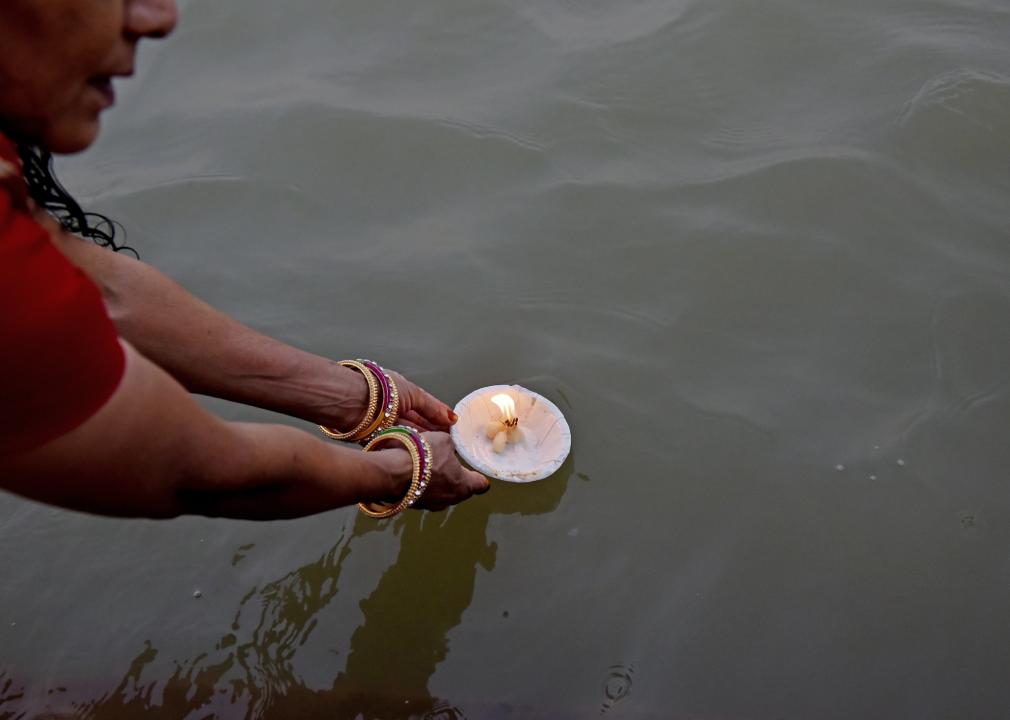
Indranil Aditya/NurPhoto via Getty Images
The Ganga
The Ganga, also known as the River Ganges, is mentioned in many religious texts as sites of miraculous events or as holding healing powers. So, the location and water itself are considered sacred by Hindus. Ceremonial bathing in this river is thought to wash away the bad and bring in the good. In recent times, increasing concerns are growing around the pollution and quality of the water because of religious use. People bathe in the river, set candles afloat, and also spread cremated remains in the river. The combination of all those tributes over time has created environmental problems.
Dan Kitwood // Getty Images
Visiting temples
People pay visits to temples to honor the idols of celebrated deities like the goddess Lakshmi. Priests will accept donations and blessings that come in the form of fruits, flowers, or money. They will also perform prayers and guide people through the puja itself.
Christopher Furlong // Getty Images News
Dance
Dances are also historically tied to this celebration as another way to honor the goddess Lakshmi and bring good luck for the coming year. The dances themselves vary regionally but all tell a story through physical movements and expressions.
NARINDER NANU // Getty Images for AFP
Festival sweets
Perhaps the sweetest parts of the Hindu festival are the desserts themselves. It’s a tradition to make sweets such as gulab jamun, Laddo, Kaju Katli, and so many more. Pictured above is an Indian chef making trays of gulab jamun, which are soft spheres made from milk, sugar, rose, and cardamom. These sweets are there for celebrators to enjoy and also to offer the gods in hopes of a blessing.
You may also like: Stories behind holidays around the world
